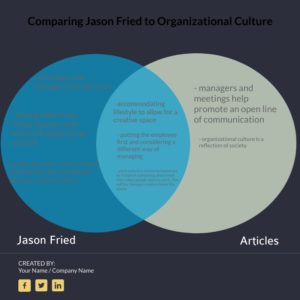- For this weeks assignment, I am choosing to focus on Salecl’s talk about choice, and how paralyzing it can be. In terms of her rhetorical approach, she engages the audience by starting with a few quotes. These quotes are relevant to the rest of her speech as she incorporates them throughout her talk by ending by talking about one. She ended with restating that she had then choice to include the quote by Samuel Johnson, and she is choosing to end with the same quote. She also engages the audience by retelling a series of stories that while humorous at times, drove home her overarching message of how we as individuals have the choice to change things not only for ourselves, but our environment. Each story played a different role in her topics, as she touches upon how we are often paralyzed by the looming choices and we tend to overthink. As humans, we often take choices too seriously which may induce anxiety and think that what we do now will affect the future, or the choice we make now may contradict what we choose later on in life. I thought her argument was eloquently put together as she related experiences of others and herself to many feelings that the audience may have. She incorporated relevant examples, of taxing the rich or wanting a healthier lifestyle, that the listener can relate to themselves in order to completely understand her points. Her ability to generalize then personalize her message I believe was the most significant part of her delivery, and even made me reevaluate how seriously I take choices and how I too become paralyzed.
3. I choose to do Jason Fried’s Ted Talk on why work does not happen at work to add to the body of knowledge we already have from organizational culture. Jason Fried is a writer and entrepreneur who created the software company basecamp who offers three possible to solutions to why work does not get done at the workplace. He offers the view of how working in an office can allow for short bursts of time to do work, instead of focused uninterrupted time to truly let the creative brain take over. He also touches upon how working from home allows for voluntary distractions, when someone needs a break, compared to the involuntary distractions of working in the office, where someone may approach you and ask you to do something other than what you are already doing. He poses the idea that managers and meetings are the true issue as they are place holders and distractions that add to the inability to work in an office. In order to counteract this, he gives three suggestions to remedying this deficit. I saw a connection between what we have been learning about organizational culture and his solutions for a better work environment. Below, I have detailed them in a Venn diagram to physically show the connections that can be drawn while also highlighting the differences that I have noticed.

Writing and organizational cultures
Jacqueline, I appreciate the Venn diagram you made relating the past articles we’ve read with Jason Fried’s point of view. Though it’s pixelated and hard to read the left bubble, I can still make out the comparison your making. It’s interesting to look at because one position is asking/ encouraging us to keep communication consistent, clear, and open whilst the other asks us to do the opposite by taking a step back, relaxing, and reserving ourselves from the constant communication we have going around the office. As with everything, there’s a balance between the two but recognizing the value each side presents is definitely an enlightening start especially in our discussions of organizational culture.
Nice work, Jackie–consider the value that Fried is bringing to this discussion in terms of the material, real-world conditions of work (not just the theory, but the practical implications)
Jackie, I also found Fried’s Talk very interesting. I loved the use of the venn diagram. His speech helped show organizational culture in a different light, as it pertains to our work at home versus in the work place. As he explains, distractions are sometimes necessary to our work, and the workplace doesn’t necessarily provide helpful ones given the circumstances. I agree in his method of introducing problems in order to explain his solutions.